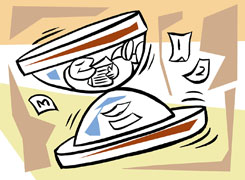Hi Sir,
My name is Abhishek, and i am 40 years old, I have 12 lakhs in FD, 6 lakhs in MF and stocks(5+1), and 10 lakhs cash, also, i have a flat in Delhi with 15 lakhs home loan, A car loan of 8 lakhs. and i am a software engr. In an MNC, having salary of 1.5 lakhs in a month. ABOVE IS ALL my asset. But i want to be financially free. Is it possible? Please suggest any best practical idea for me. Currently, WFH in ranchi.
Ans: At 40, with your current income and asset base, the goal of financial freedom is definitely achievable. Let’s work towards a 360-degree financial strategy to help you build a solid and practical roadmap.
Below is a complete evaluation and guidance to align your financial life with your freedom goal.
Current Financial Position – Snapshot and Assessment
You have Rs. 12 lakhs in Fixed Deposit.
You hold Rs. 6 lakhs in mutual funds and stocks.
You are keeping Rs. 10 lakhs in cash.
You have a flat in Delhi. You have Rs. 15 lakhs home loan on it.
You also have a car loan of Rs. 8 lakhs.
Your monthly salary is Rs. 1.5 lakhs from an MNC job. You are working from Ranchi now.
You are 40 years old and working in a stable job.
This is a very decent starting point. You are earning well, and you have good savings. But to reach financial freedom, we need better alignment.
Let’s move step-by-step.
Step 1 – Clarify What Financial Freedom Means to You
Financial freedom is not only about quitting your job.
It means you have enough income from investments to cover your monthly needs.
You should be able to choose to work or not, without worrying about money.
So first, we need to estimate your monthly future expenses post-retirement.
Let’s assume Rs. 60,000 to Rs. 80,000 per month today, adjusted for inflation later.
That means you need to create income sources to support at least Rs. 1 crore to Rs. 2 crore in future corpus.
This is not impossible. You have time and income to build this.
Step 2 – Improve the Quality of Your Assets
Let us now improve your asset quality to suit your freedom goal.
Rs. 12 lakhs in Fixed Deposit is very conservative.
FD earns low returns, and interest is fully taxable.
Keep only 4 to 5 lakhs in FD for emergency use.
Move the rest (7 to 8 lakhs) to good quality mutual funds through SIP.
Your Rs. 10 lakhs in cash is too much to keep idle.
Keep Rs. 1.5 to 2 lakhs in savings for short-term needs.
Move the balance Rs. 8+ lakhs to a liquid mutual fund for better returns.
Over the next 3 to 6 months, you can start shifting this towards equity-oriented funds.
Rs. 6 lakhs in MF and stocks is a good beginning.
But if these include index funds or direct funds, you must evaluate them carefully.
Index funds only copy the market, and don’t actively manage risks.
They underperform in falling or flat markets.
A good actively managed mutual fund is better in Indian conditions.
Direct mutual funds look low-cost, but no expert advice is included.
When you invest through a Mutual Fund Distributor (MFD) who is also a Certified Financial Planner, you get proper hand-holding.
Regular funds through a CFP-linked MFD provide portfolio monitoring, review, and behavioural coaching.
This helps avoid panic selling or greed-driven buying.
Step 3 – Work on Your Loans
You have Rs. 15 lakhs home loan.
This is acceptable if interest is below 8.5% per annum.
Home loan offers tax benefits also. So don’t rush to close it.
Continue paying EMIs without stress. Try to pre-pay 1 EMI every 6 months if possible.
This will reduce your loan term.
But do not use emergency cash or investments to close it.
Car loan of Rs. 8 lakhs is a liability without return.
Try to clear this in the next 1.5 years.
Use your bonus or incentives for that.
Avoid buying new cars or gadgets on EMI again.
Step 4 – Build a Systematic Investment Plan
You should be investing 30% to 40% of your monthly income.
That means Rs. 45,000 to Rs. 60,000 per month.
Start SIPs in diversified actively managed mutual funds.
Allocate more in equity-oriented funds for long-term growth.
Keep a small portion in hybrid or conservative hybrid funds for balance.
If you are supporting family, consider a term insurance plan (not ULIP or endowment).
Term insurance is cheaper and offers better coverage.
Also take health insurance for self and family, even if company gives cover.
Step 5 – Emergency Planning and Risk Management
You must keep an emergency fund equal to 6 months expenses.
You already have FD and cash, so earmark Rs. 3 to 4 lakhs for this.
Put this in a separate savings or liquid mutual fund account.
Don’t touch this unless there is an actual emergency.
Review your health and life insurance policies yearly.
Step 6 – Review and Improve Your Monthly Budgeting
Track your monthly expenses. Use simple mobile apps or Excel.
Avoid impulse expenses like gadgets, travel, or lifestyle items.
Stick to a monthly budget. Save before you spend.
Increase your SIPs every year by 10%.
This will match inflation and improve wealth creation.
Step 7 – Don’t Depend on Real Estate for Financial Freedom
Real estate has low liquidity and high maintenance.
Rental yield is only 2 to 3%.
Also, resale takes time and effort.
Don’t invest more in real estate. Focus on financial instruments instead.
Step 8 – Plan Your Retirement and Passive Income Sources
At age 40, you have 15–17 years to retire.
That’s enough time to build a retirement corpus.
If you invest Rs. 50,000 monthly for 15 years in mutual funds, wealth can be significant.
Once you retire, you can shift to monthly income plans from mutual funds.
These generate regular withdrawals with tax efficiency.
You must also reallocate to more conservative funds as you near retirement.
Avoid annuity products. They give low returns and poor liquidity.
Step 9 – Tax Planning and Filing
Use tax deductions wisely under Sec 80C, 80D and home loan benefits.
Keep your investments tax-efficient.
For example, equity fund gains up to Rs. 1.25 lakhs are tax-free annually.
Above this, LTCG is taxed at 12.5%.
Short-term capital gains from equity funds are taxed at 20%.
Debt fund gains are taxed as per your income slab.
You should do tax planning with a CFP who can review your total asset base.
Step 10 – Set Clear Milestones and Review Yearly
Set short, mid, and long-term goals.
For example: close car loan in 1 year, build Rs. 50 lakhs corpus in 5 years, etc.
Track these goals once every 6 months.
If you miss one goal, don’t panic. Adjust and continue.
Stay disciplined with SIPs and avoid timing the market.
Don’t follow tips or market trends blindly.
Final Insights
You are doing well for your age and income level.
But to reach financial freedom, you need more structured planning.
Convert your cash and FDs to wealth-generating assets.
Stop investing in real estate and focus on financial investments.
Eliminate loans step-by-step.
Increase your SIPs regularly and keep your portfolio reviewed by a Certified Financial Planner.
Review your goals, risks, and insurance every year.
Stay consistent and patient. Freedom will come earlier than expected.
You are on the right track. Just need direction, discipline, and dedication.
Best Regards,
K. Ramalingam, MBA, CFP
Chief Financial Planner,
www.holisticinvestment.in
https://www.youtube.com/@HolisticInvestment


























